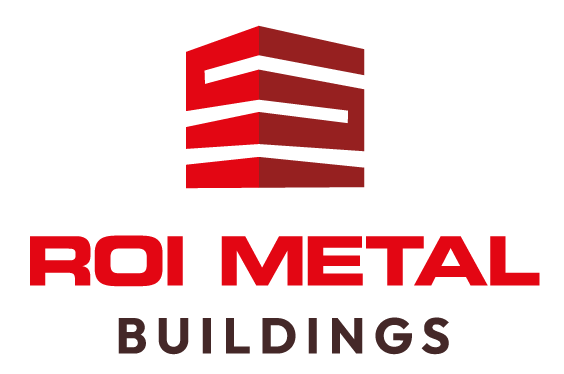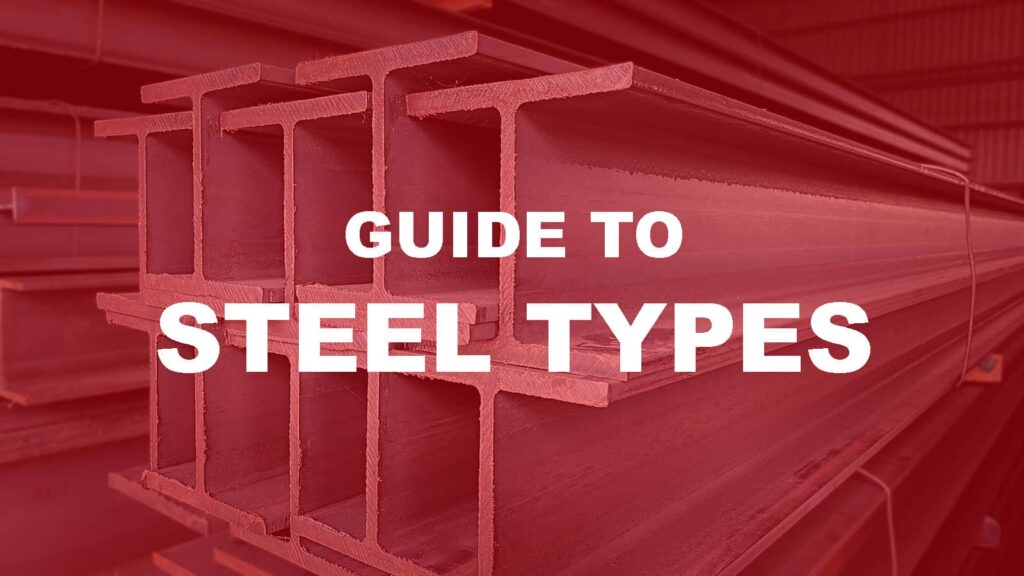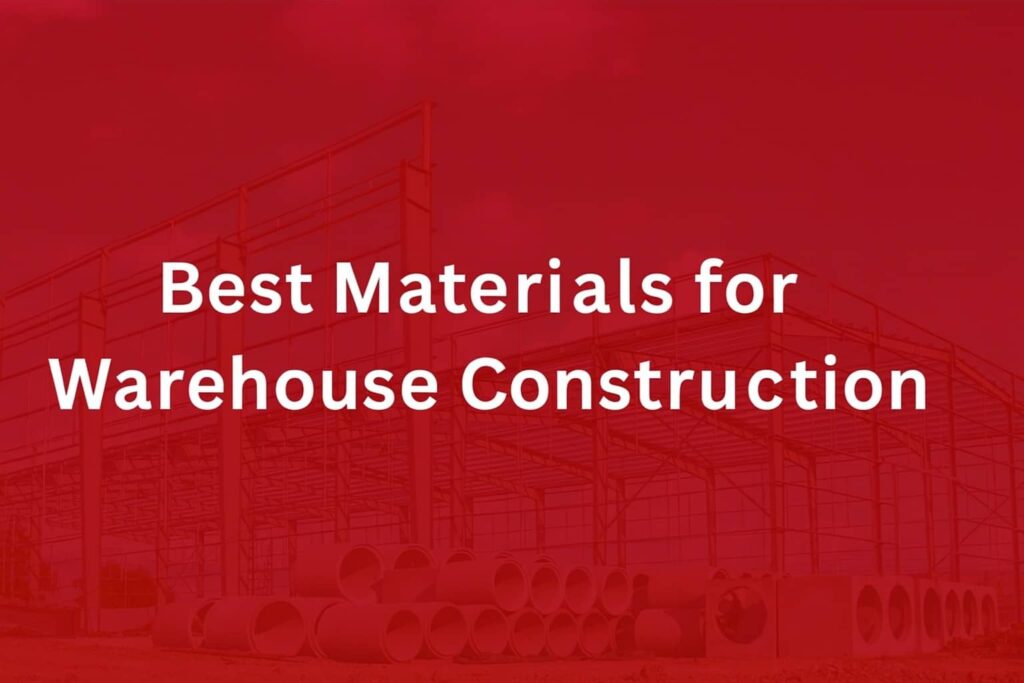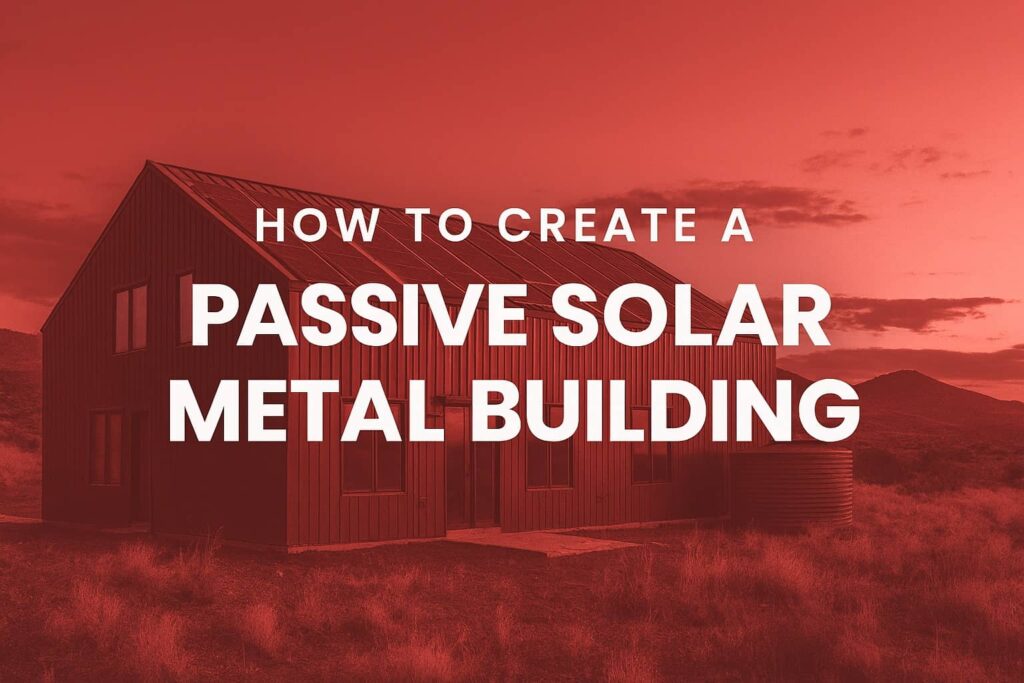Steel Types: Why Grades Matter for Your Metal Building Investment
If you’re considering a new metal building—be it for commercial, residential, or storage purposes—you’re already on the right track for maximizing your project’s return on investment (ROI). Steel buildings have become the smart choice for those seeking long-lasting value, with impressive performance across durability, maintenance cost, design flexibility, and climate resilience. Yet, one critical topic is often overlooked: the type and grade of steel chosen for each structural component. At ROI Metal Buildings, we believe transparency is king. You deserve straightforward advice, not jargon or upsells. This post cuts through the noise, breaking down the steel grades you’ll encounter, practical selection tips, and why making the right call at this stage pays dividends down the line.
Who Is This Guide For?
This guide is written for business owners, land developers, contractors, and homeowners who are tired of “fluff” content. Whether ordering a turnkey warehouse or a DIY metal garage kit, our clients appreciate when we address real problems—budget clarity, performance certainty, regulatory compliance, and future-proofing your investment. If that speaks to you, you’re in the right place.
You’ll also find actionable tools, including a steel grade selection table, clear explanations of material specs, cost-benefit perspectives, and guidance on codes and climate resilience. Rest easy: at ROI Metal Buildings, empowering you with knowledge is our mission
Understanding the Foundations
Before diving into grades, it’s worth emphasizing why steel remains unbeatable for metal structures, both now and in the future.
- Longevity & Durability – Steel structures don’t warp, shrink, rot, or attract termites. They shrug off the elements, often outperforming wood or concrete in hostile environments, from hurricane alleys to snow country. This structural integrity means lower repair bills and more predictable long-term value.
- Reduced Ongoing Costs – Beyond strength, steel’s non-combustibility can mean insurance discounts. Modern coatings and insulation tech cut energy bills. Maintenance becomes an occasional line item, not an annual headache.
- Speed & Design Flexibility – Steel building kits are engineered for rapid on-site installation. Pre-fabrication enables wide-open interiors, tall bays, and custom layouts that are often impossible (or prohibitively expensive) with legacy construction methods.
- Sustainability – Steel is 100% recyclable, a win in today’s eco-conscious world. Many grades even use recycled content, further improving the carbon footprint.
Bottom line: The right steel building, with the right steel grades, is a clear win for ROI, longevity, and flexibility.
Core Steel Types for Metal Buildings: Honest Breakdown
Let’s cut to the chase: Your steel building project will typically leverage a blend of several distinct steel types. Each has a serious job to do in the structure, and each is assigned a specific ASTM or AISI grade code. Here’s what they mean for your building and your wallet.
1. Structural Steel: The Backbone of Big Loads
Where It’s Used: Main frames, beams, columns, trusses—any element directly supporting major weight or spanning long distances.
Key Structural Steels in Metal Buildings
| ASTM Grade | Common Uses | Yield Strength (psi/MPa) | Notable Features |
|---|---|---|---|
| A36 | General structural shapes/plates | 36,000 psi (250 MPa) | Workhorse mild steel for moderate loads |
| A992 | W-shapes (wide flange beams) | 50,000 psi (345 MPa) | Superior for seismic zones, weldable |
| A572 (Gr 50) | Higher strength beams/frames | 50,000 psi (345 MPa) | Lighter weight for same load capacity |
ASTM A36 is the classic “mild” structural steel. Its moderate yield strength and excellent workability make it the go-to for most generic framing jobs. Its cost-effectiveness explains its broad adoption, but it may not be enough for long spans, high wind/snow loads, or seismic requirements.
ASTM A992 has largely replaced A36 for wide-flange (W) beams due to better ductility and higher minimum strength. It is often required by local codes, especially where seismic resistance matters. If your building has open bays or requires long, clear spans, this grade is usually specified.
ASTM A572 (Grade 50) offers similar yield strength but with tighter chemistry and better weldability than older grades. It’s the material of choice for large frame buildings that need to stay light without sacrificing load-bearing potential.
What It Means for ROI: Choosing the right structural steel means balancing initial cost with total lifetime value. Higher-strength steels (A992, A572) enable lighter, more efficient frames and thus can lower your total steel tonnage and foundation costs.
2. Cold-Formed Steel: Efficient For Secondary Framing
Where It’s Used: Purlins, girts, wall studs, partitions—essentially any location where loads are lighter and flexibility is prized.
Key Cold-Formed Grades
| ASTM Grade | Format | Coating Available | Best For |
|---|---|---|---|
| A653 | Sheet/coil | Galvanized (G60/G90) | Framing with corrosion protection |
| A1003 | Sheet/coil | Galvanized | Lightweight framing, code-compliant |
ASTM A653 covers the most common cold-formed steel framing. Its versatility allows it to be rolled into nearly any profile for walls, ceilings, or roof support. Galvanized coatings (see next section) are standard to fight corrosion, especially in roof and wall assemblies.
ASTM A1003 is engineered for cold-formed steel structural members to comply with building code requirements for load-bearing and non-load bearing walls. It offers high strength-to-weight ratio and is often used in pre-fab modular and rapid-assembly kits.
Cold-formed steel is cost-effective, light, and highly customizable. Choosing the right cold-formed grade ensures your building meets local code requirements for secondary elements, keeps costs down, and prevents over-engineering.
3. Galvanized Steel: Corrosion Resistance Where It Counts
Where It’s Used: Roofing panels, wall sheeting, trims, doors, siding, purlins, and girts—anywhere long-term exposure to moisture poses a threat.
Understanding Galvanized Coatings (G60 vs G90)
| Coating | Zinc Layer (oz/ft²) | Corrosion Resistance | Typical Use |
|---|---|---|---|
| G60 | 0.60 | Moderate | Interior/controlled environments |
| G90 | 0.90 | High | Exteriors, high-moisture/outdoor |
G90 means roughly 50% more zinc than G60. That translates to longer lifespan in challenging climates, less maintenance, and better warranty terms—albeit at a higher initial material cost.
ROI Metal Buildings generally recommends G90 galvanized steel for most roofing and wall applications, especially if you’re building in humid, coastal, or freeze/thaw regions. G60 has its place for interiors, low-moisture barns, or budget-constrained projects.
What’s the process? Both G60 and G90 steels are hot-dipped in zinc, forming a barrier against rust and sacrificing themselves (cathodic protection) should the coating be breached.
ROI Perspective: Skimping on galvanized grade can save a bit upfront, but costly corrosion repairs or panel replacements typically erase those savings within a few years in harsh climates.
4. Alloy Steel (AISI 4130, 4140): For Specialized Loads and Demands
Where It’s Used: Highly stressed connections, hardware, bolts, heavy machinery mounts, and any spot requiring superior toughness and fatigue resistance.
AISI 4130 (“Chromoly”) and 4140 are low-alloy steels infused with chromium and molybdenum for extra strength and toughness. While not typically used for the main frame of everyday buildings (due to cost), they’re invaluable for critical joints, high-wear points, or when components need both weldability and substantial strength under repeated shifting loads.
In large warehouse buildings, industrial fabrication shops, or high-performance settings (e.g., crane rails or hangar doors), these alloys deliver reliable service life even under abuse.
When should you insist on it? If the engineer’s plans or code inspector calls for it (or you need bulletproof reliability in specific locations), AISI 4130/4140 alloys can prevent failures and costly downtime.
5. Stainless Steel (304, 316): The Kings of Corrosion Resistance
Where It’s Used: Fasteners, doors, flashing, trims, equipment mounts in food/agriculture/medical buildings, any element exposed to chemicals or marine air.
| Grade | Alloying Elements | Corrosion Resistance | Typical Use Cases |
|---|---|---|---|
| 304 | 18% Cr / 8% Ni | Very good | Most general purpose stainless |
| 316 | 16% Cr / 10% Ni / 2% Mo | Exceptional | Harsh chemicals, coastal, marine salt |
304 stainless is the default for most weather-exposed bolts and small components. If your building is going near the ocean, inside a salt barn, or handling aggressive chemicals, 316 stainless, with its molybdenum, is the gold-standard for resisting pitting and crevice corrosion.
Cost factor: Stainless is several times more expensive per pound than carbon steel. That’s why it’s usually limited to accent details, hardware, or environments that truly justify the investment—say, a carwash, fertilizer plant, or seafood processing facility.
Steel Grade Selection Table: Match Your Needs to the Right Steel
Most metal buildings require a blend of grades and coating choices. Your priorities—budget, load, climate, flexibility—will inform the optimal specification. The following table headlines our advice, drawing on decades of project success and lessons learned across the U.S.
Steel Grade Selection Table for Metal Buildings
| Selection Factor | Best Choice(s) | Why This Works | Notes & Guidance |
|---|---|---|---|
| High Load-Bearing | A992, A572 Grade 50, A36 (modest loads) | Superior structural strength, code-compliant | Vital for main frames, large clear spans |
| Corrosive Climates | Galvanized A653 G90, 316 Stainless | Highest rust resistance, longer lifespan | G90 for roof/walls; 316 for hardware/trims in salt air |
| Budget Constraints | A36 (where allowed), G60 Galvanized | Cost-effective frames and panels | Ensure compliance with codes; plan for earlier upkeep |
| Design Flexibility | Cold-formed A653/A1003 | Versatile profiles, easy custom shaping | Used for purlins, girts, non-load framing |
| Code Compliance | A992, A572, A1003, local mandates | Satisfies strength, ductility, seismic codes | Always check with local permitting authority |
Context and Analysis: Applying the Table to Real-World Decisions
High load-bearing requirements—such as in commercial warehouses, gymnasiums, or airplane hangars—almost always demand high-strength structural steels like A992 or A572 Grade 50 for main frames and clear span beams. Skimping here can invalidate your building permit, fail an inspection, or worse, result in premature fatigue or collapse.
Corrosive climates—think Gulf Coast, Great Lakes, New England, or agricultural feedlots—demand the protection of galvanized G90 or even 316 stainless hardware. Rust is not simply cosmetic; unchecked, it can undermine structural integrity within years, far outpacing any initial cost savings from lighter coatings.
When budget is your top concern, you’ll often see proposals specifying ASTM A36 for frames and G60 for panels. This can work, especially in dry, low-exposure regions and when maintenance schedules are rigorously followed. However, if you expect to hold or operate the building longer than a decade, plan for patch repairs, recoats, and replacements earlier.
If your project calls for unique design flexibility—say, custom window openings, odd wall shapes, or rapid reconfiguration—cold-formed steel grades deliver the necessary adaptability with minimal cost penalty.
Finally, local building codes are king. Even the most attractive offer means nothing if it doesn’t meet the minimum standards set by the International Building Code (IBC) and enforced locally. Codes dictate required strength, weldability, fire resistance, corrosion protection, and seismic resilience.
Meeting Building Code & Permit Requirements: The Steel Grade Connection
Every steel building project must satisfy not just your engineering needs, but local, state, and sometimes federal code requirements. Codes exist for safety—and ignoring them can mean rejected permits, expensive rework, or forced teardown.
The Big Picture:
- International Building Code (IBC): The IBC, updated every three years, is the core code for steel structures in most U.S. jurisdictions. It covers minimum strength (yield, ductility), corrosion resistance, fire safety, and occupancy-specific requirements.
- Local Modifications: Local codes may “up the ante,” adding stricter wind, snow, or earthquake standards. For example, coastal Florida buildings often require higher-grade galvanized coatings and stronger framing to withstand hurricanes.
- Permit Workflow: You’ll need a comprehensive set of engineered plans specifying every major steel grade and coating, stamped by a licensed professional. Your supplier (including ROI Metal Buildings) should provide documentation demonstrating all primary and secondary steel members meet or exceed code.
Critical tip: Be wary of vendors who “value engineer” steel grades below code minimums. This can result in major delays and significant unplanned costs when permitting authorities intervene.
Deep Dive: Steel Material Properties and Their Impact on Building Performance
Great buildings are built on great materials. Let’s break out the key characteristics of each prominent steel type, with practical implications.
ASTM A36 Structural Steel
Composition & Use: Low carbon, mild steel. Reliable, weldable, and easy to machine. Yield strength ~36,000 psi.
- Pros: Low cost, highly versatile, excellent fabrication and weldability.
- Cons: Lower strength than specialized grades, so heavier/larger sections may be needed for long spans or high loads.
ROI Insight: Use for columns, base plates, and ancillary frames in moderate load situations for best value.
ASTM A992 Structural Steel
Advancement: Improved weldability and strength over A36. Carbon control ensures better ductile performance.
- Pros: 50,000 psi minimum yield, better for seismic and heavy-duty applications. Now standard for wide flange (W-beam) shapes.
ROI Insight: Required by code in many regions for primary frames. Enables longer spans with less tonnage, so a higher initial per-ton cost may be offset by reduced total steel volume.
ASTM A572 (Grade 50) Structural Steel
Feature: High-strength, low-alloy. 50,000 psi minimum yield, yet lightweight for its strength.
- Pros: More efficient frames, especially suited for large open buildings with heavy roof loads or snow areas.
ROI Insight: Lighter frame = potential savings on foundations, less site disruption, and easier handling/logistics during construction.
ASTM A653 Galvanized Cold-Formed Steel
Feature: Low carbon content, hot-dip galvanized with zinc for corrosion resistance.
G60 vs G90: G60 for interior or mild exposures; G90 for harsh exteriors, high humidity, or coastal/marine climates. (See galvanized steel analysis above.)
ROI Perspective: Pay the premium for G90 if you expect long-term exposure to wet cycles, or plan to hold onto the property for resale value.
AISI 4130/4140 Alloy Steel
Composition: Incorporates chromium and molybdenum for superior strength, toughness, and fatigue performance.
- Pros: Machinable and weldable, holds up under significant physical and cyclic loads.
- Cons: Higher cost; typically reserved for high-stress connection points, heavy machinery mounts, or moving components.
Stainless Steels: 304 vs 316
AISI 304: The “default” stainless, excellent against rain and most fresh water. Moderate resistance to corrosion.
AISI 316: Adds molybdenum, making it the top performer against chlorides (salt), acid rain, and chemical exposure.
ROI Perspective: 316 is usually justified for hardware and fasteners in extreme conditions; 304 suffices for most building exteriors outside heavy industrial or marine exposures.
Practical Scenarios: Matching Steel Grades to Building Uses
Let’s connect technical details to real-world usage.
Commercial Warehouses
- Frames: A992 or A572 for primary structure.
- Panels: G90 galvanized sheet steel for exterior walls and roof.
- Hardware: Stainless 304 or coated galvanized steel fasteners.
Agricultural Buildings
- Frames: A36 (cost-driven, moderate exposure).
- Panelling: G90 galvanized, maybe even 316 stainless for fertilizer/ag chem storage.
Coastal Storage Units
- Frames: A992/A572 or as per local code for wind/snow.
- Panels & trims: G90 galv or aluminum/zinc alloy for superior corrosion protection.
- Hardware: Stainless 316 or special marine-grade fasteners.
Residential Garages
- Frames: A36 or cold-formed A653/A1003 steel.
- Panels: G60 or G90 depending on exposure risk and desired lifespan.
Cost-Benefit Analysis: Steel Grade Choices and Your Bottom Line
Cost is more than just per-ton steel price. Savvy buyers look at lifecycle value:
- Material Price: Higher grades or thicker coatings cost more up front.
- Construction Efficiency: High-strength grades enable faster builds, less material, and lower labor.
- Maintenance: Inferior steel choices may lead to corrosion, premature failure, or endless upkeep.
- Regulatory Delays: Failure to meet code costs far more in time, penalties, or redesign than any upgrade to a compliant steel grade.
- Resale or Expansion: Superior steel grades boost the salability, longevity, and adaptability of your asset—translating directly to financial ROI.
In our experience, making the right choices on steel class and grade delivers the “payback” through lower maintenance costs, reduced insurance premiums, faster project completion, and maximum asset longevity.
Real-World Stories: What Happens When Steel Grade Selection Goes Wrong?
- Case 1—Coastal Building, Insufficient Galvanization: A developer specified G60 for roof/wall panels in a Florida beachfront warehouse. Seven years later, salt air had visibly corroded through the zinc layer, requiring a full panel replacement that cost more than the original material “savings.”
- Case 2—Code Non-compliance Delays: A rural training gym’s designer called for A36 in main span beams without referencing updated IBC seismic requirements. The result? Costly rework and two-month delays after failing the structural inspection, impacting the owner’s opening schedule and lost revenue.
- Case 3—Industrial Overkill: A small parts shop over-specified 316 stainless on all wall panels and purlins—massively overshooting realistic hazard scenarios—which inflated costs by 40% with no ROI benefit in their semi-arid locale.
Lesson: Let the application, climate, and local code dictate your steel grade—not just price or brand promises
Final Tips: Getting Your Steel Building Project Off to the Right Start
- Start with Your Needs, Not Just the Price List. Map out what the building must do, where it’s located, and how long you’ll own it.
- Demand Documentation. Always request material certifications, documentation of ASTM/AISI grades, and galvanization specs.
- Consult Your Local Authority. The fastest path to a smooth approval is verifying local code requirements up front.
- Work With a Transparent Provider. Choose suppliers and contractors (like ROI Metal Buildings) who answer tough questions, back up their claims with real references, and focus on maximizing your return.
- Plan for the Long Game. A few percentage points more for the right steel grade almost always beats paying for repairs, downtime, or building obsolescence later.
Conclusion: Why Steel Grade Know-How Is Central to ROI
Steel selection isn’t glamorous, but it is the backbone of metal building success. As you move forward on your project, trust in fact-based recommendations, code-driven specifications, and the transparent expertise ROI Metal Buildings is known for. The right steel grades protect your asset, budget, and peace of mind—yielding the outcome every investor and owner hopes to achieve: a high-return, hassle-free, and future-proof building.
If you have further questions or need a tailored quote, our non-commission team is here to help—no pressure, just answers. Stay tuned for more blog updates designed with your ROI in mind.
Ready to design a steel building that’s built to last, code-compliant, and tailored to your needs? Contact ROI Metal Buildings for transparent advice and a free consultation today.




